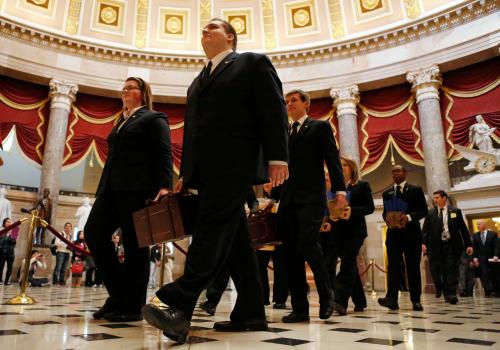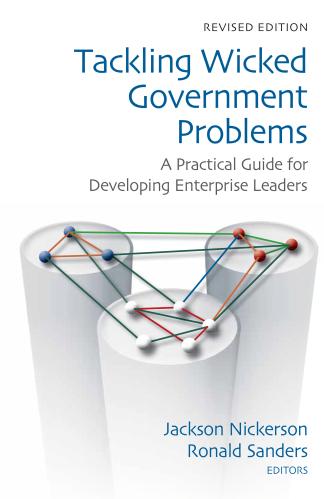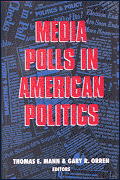This spring, former Congressman Vic Fazio (D-Calif.) implored a House committee to move forward with reviving the Office of Technology Assessment (OTA), a long-defunct congressional agency. “I think we’ve all been embarrassed by the way Congress fails to understand technology,” he shared. “OTA needs to come back in some form.”
For over two decades, OTA helped Congress to navigate complex science and technology issues. After its defunding in 1995—a casualty of Congress’s dramatic downsizing—the issues piled up. What to do about the reprocessing of spent nuclear fuel? Should the federal government invest more or less in carbon capture and sequestration? What to make of 5G and CRISPR? Of AI and AVs? Congress’s experts disappeared, but the issues didn’t.
Change, though, is in the air. This July, the House Select Committee on the Modernization of Congress gave a unanimous, bipartisan endorsement to reestablish OTA, suggesting the Congressional Technology & Innovation Lab (CTIL) as a new name. In September, a House bill outlined a modified OTA, renamed the Congressional Office of Technology (COT). A November report commissioned by Congress recommended an Office of the Congressional S&T Advisor (OCSTA). And in December, the House Science committee invited experts to weigh in on it all. Congress is no longer just debating whether support is needed—but what form that support should take.
For an institution long starved of support, this is all good news. But as Congress debates its options, compiling and comparing a growing list of ideas, it would do well to remember that form is less important than function.
Any new body should be responsible for addressing the core problem undermining Congress’s ability to keep pace with science and technology (S&T). No matter the final form—CTIL, COT, OCSTA, take your pick—what matters is the essential problem a congressional entity is authorized to solve.
In research released last May by Harvard’s Belfer Center, we summarize the problem like this: Congress does not, in fact, lack a supply of folks trying to give it advice. To the contrary, it’s overwhelmed. What it lacks is the ability to sort through it all. We call this a deficiency in absorptive capacity. The term, borrowed from management literature, refers to an organization’s ability to recognize the value of new, external information, to assimilate it, and to apply it to desired ends. In the private sector, firms suffering from low absorptive capacity are typically bad at innovating: they struggle to recognize what’s happening beyond their walls, to make sense of it, and to change how they operate in response.
When applied to Congress, consider first the current supply of information inundating the institution. Since the early 1980s, lobbying expenditures have increased more than six-fold, flooding Congress with advice. Meanwhile, the number of think tanks have more than doubled, with at least half in some capacity addressing S&T issues. Congress’s internal knowledge-banks are also churning out analysis. In 2017, the Congressional Research Service produced over 11,000 research products. The supply issue has been long in the making. To take just one example: in a four-year period during the 1960s, the Government Accountability Office (GAO) produced nearly 400 reports for Congress (about 20,000 pages)—on energy policy alone.
Nor does Congress face a demand problem. It’s tempting to assume that members just prefer to avoid these issues altogether. But talk with their offices, regardless of party, and a different story emerges. In interviews this year, members and staff identified a wide range of issues they’re eager to tackle: worker automation and re-skilling; groundwater supply; cybersecurity for critical infrastructure; natural disaster preparedness; agricultural biotechnology. But as a 2017 study found, only 11 percent of senior staffers are “very satisfied” with the support available to them—and so issues remain unaddressed. We also find that the six House committees with jurisdiction over most S&T-related policymaking are, on average, less partisan than the others, suggesting perhaps a greater appetite for working together on S&T issues than assumed by caricatures of congressional attitudes towards science.
Instead, there’s a missing link between supply and demand: a way to take in the enormous amount of available expertise and help members and their staff make use of it. Chairwoman Eddie Johnson, in this month’s House Science hearing, lamented the challenge of sorting through all of the analysis her committee receives, “struggling to make sense of competing expert opinions but still having to make policy decisions in this murky context, with potentially grave consequences.”
No matter the form (or the name), certain design principles should feature into any new body tasked with enhancing the legislature’s absorptive capacity—closing the supply-demand gap. Here are three of them.
First, a new body should improve how members engage with expertise, rather than simply generate more of it. For instance, how might a body package expertise so that it’s practically useful for lawmakers? OTA, for instance, was criticized for lengthy reports that sometimes took years to compile. Services more attuned to an attention-scarce Congress might include rapid technical commentary of issues in the headlines, or flexible, on-demand analytical support. A new body could also cultivate broad external networks of expertise on which to draw. Currently, members and staff frequently rely on personal networks for acquiring advice; a shared network of experts could enable Congress to intake expertise more efficiently.
Second, a new body should work well for rank-and-file members, not just party leaders and committee chairs. Absorptive capacity is an institution-wide problem, not a leadership problem. Supporting members broadly would be a departure from the OTA model, which addressed a relatively narrow constituency within Congress. Its oversight mechanism, a twelve-member board, tailored much of OTA’s work to its own needs. Virtually all studies requested by a board member were authorized—unlike those requested by other members—while roughly a quarter of studies supported committees on which board members sat. (When OTA was defunded, few members had experience engaging with it; some didn’t even know it existed.) An empowered director of a new body could instead have more latitude for servicing the whole institution.
Third, a new body should be deeply embedded within Congress, rather than offer services from afar. Unlike GAO, which operates at a significant distance from most members and staff, OTA operated on the Hill. Congressional staffers spoke of their personal relationships with trusted OTA staff that they called on when needed, often informally. Likewise, a new body will serve Congress well only if it gets to know Congress well—identifying capacity constraints and designing responsive solutions. Team members could be dispatched to committees or member offices for significant stretches of time; office space should be proximate to the Capitol complex; and formal protocols for tapping its services should prioritize access. Operating at arms-length risks simply adding to the noise.
Each of these principles draws focus to how the institution as a whole intakes, processes, and makes use of expertise—toward building the capacity to turn huge bodies of external knowledge into better legislative outcomes. To be sure, no single new agency on the block will by itself solve the problem. Congress has for decades depleted its internal capacities—far beyond doing away with OTA. Since the 1980s, staffing at its support agencies has plummeted by a third, while many committees have barely half the staff they once enjoyed.
But a fresh agency focused on the right problem is a smart place to start.
The views and opinions expressed in this article are those of the authors and do not necessarily reflect the official policy or position of the Brookings Institution, the Institute for Strategy & Competitiveness, the Federal Reserve Board, or any U.S. government entity.











Commentary
Congress should revive the Office of Technology Assessment. Here’s how to do it
December 18, 2019